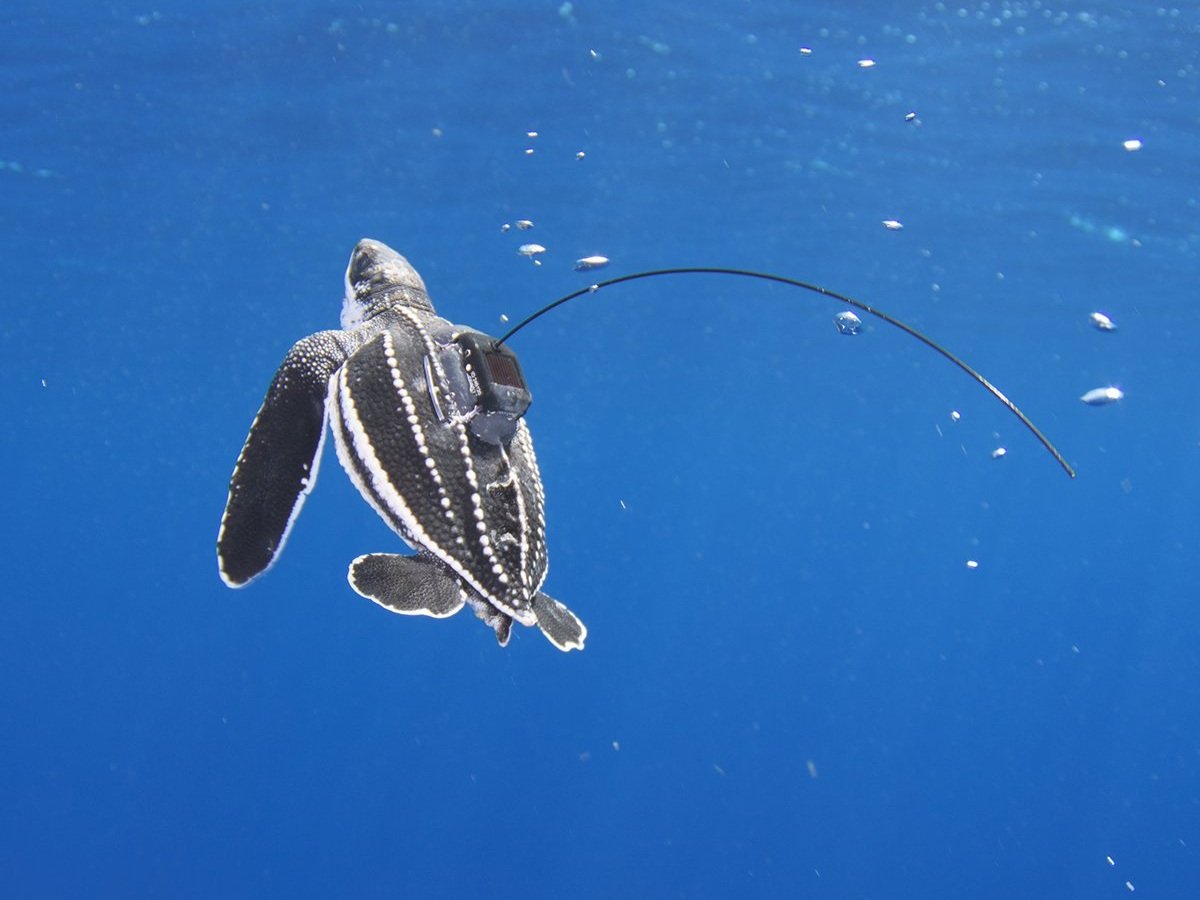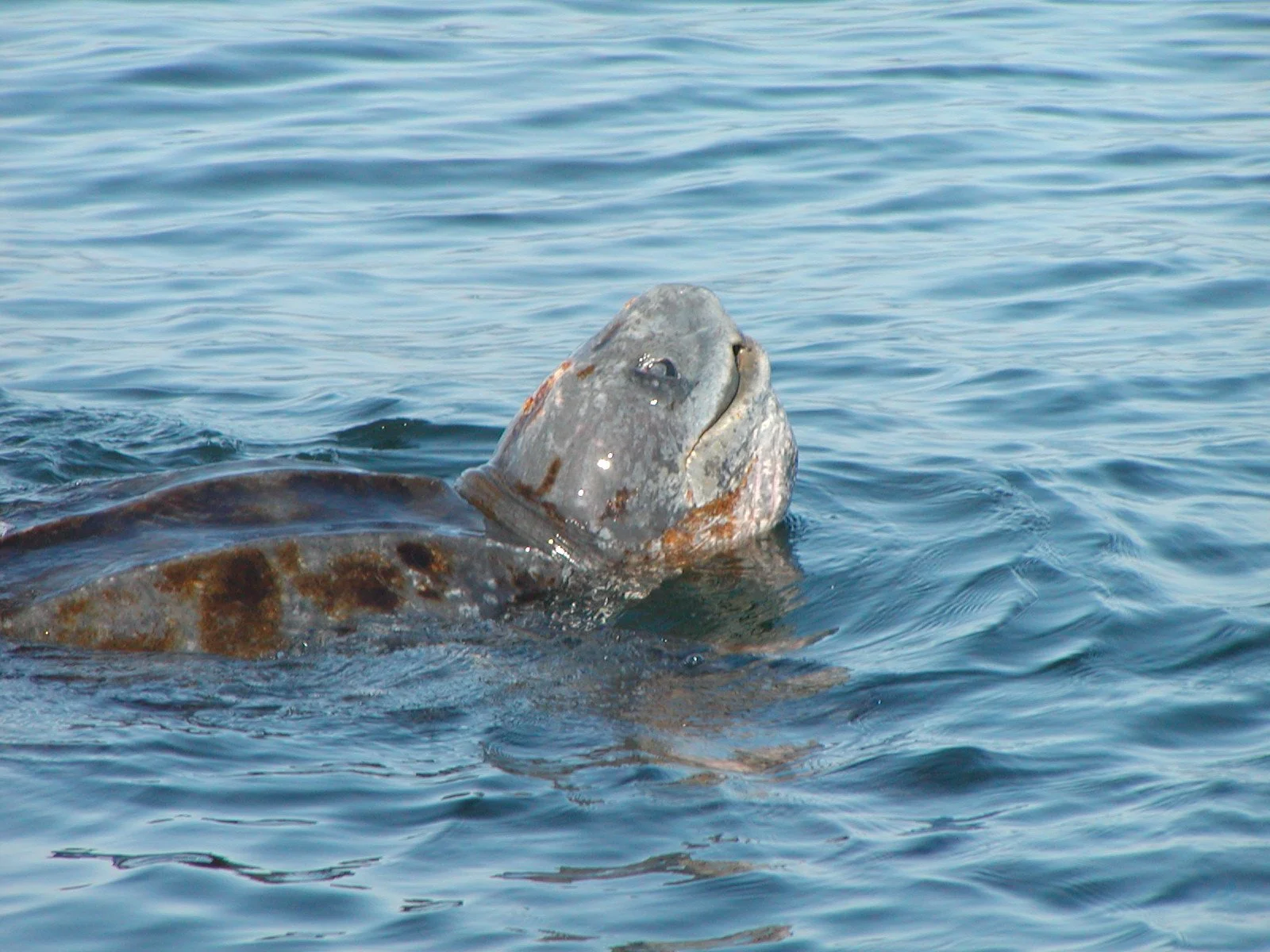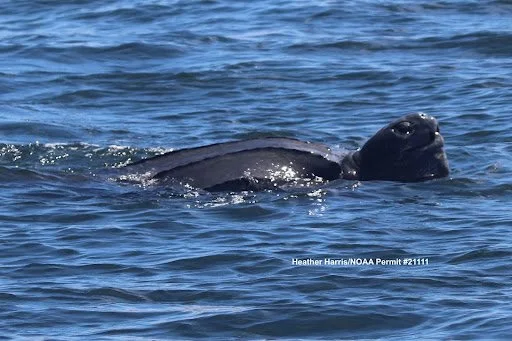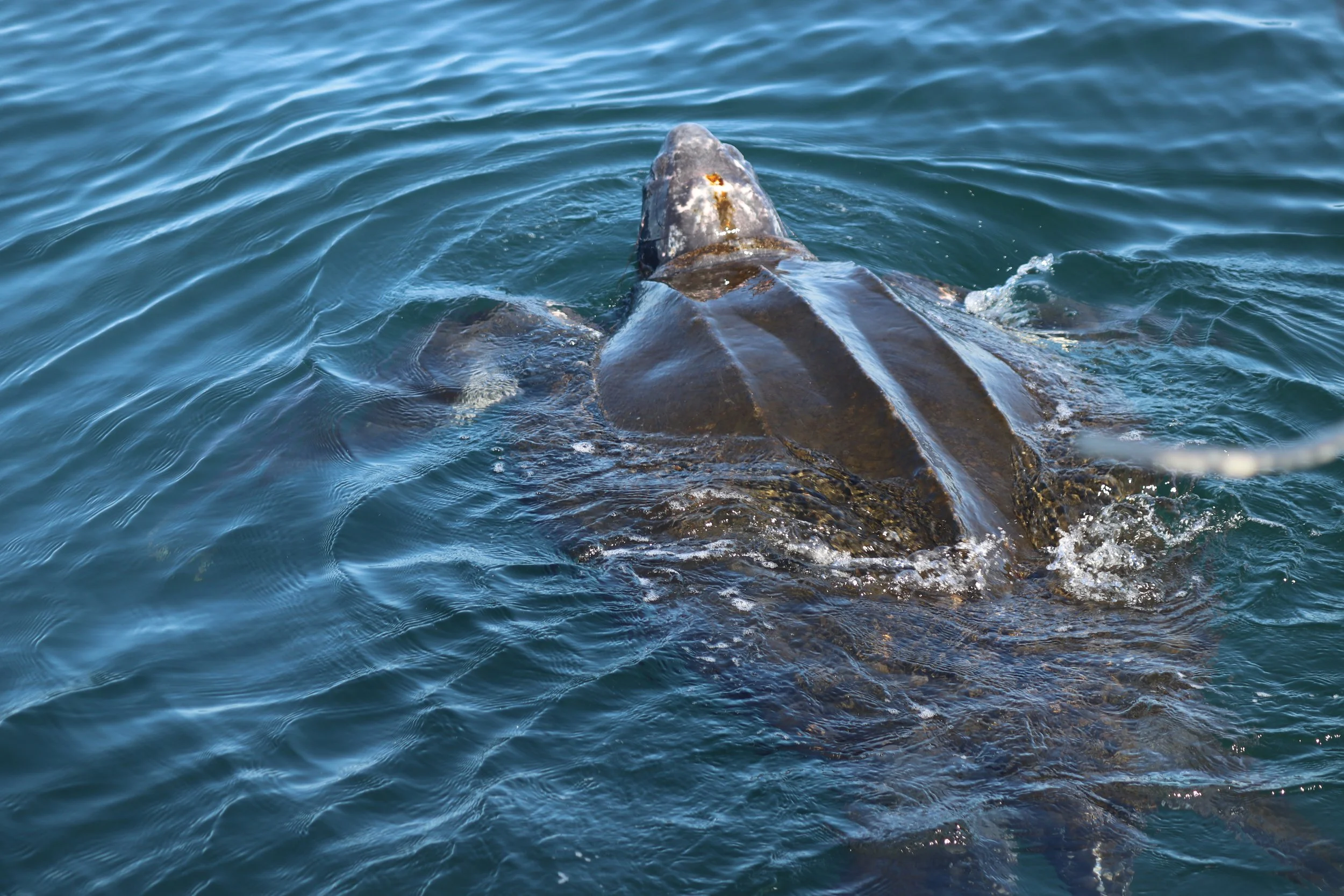Each year, the Upwell and NOAA Fisheries team conduct aerial and vessel-based surveys for leatherback sea turtles off the US West Coast. The data from these surveys can be put into action to protect the critically endangered West Pacific leatherback population. During August and September of 2024 the collaborative team documented their efforts in an engaging web series called Looking for Leatherbacks.
Algorithm Magic: Predicting Leatherback Presence in the California Current
Nerea Lezama-Ochoa is a marine biologist working as a UCSC project scientist at the NOAA Environmental Science Division in Monterey. Her team is producing daily projections of suitable habitat for 10 highly migratory species (including leatherback sea turtles). Read Nerea’s blog about how these projections are created with accuracy and why they are helpful to conservation efforts.
Aerial Surveys Result in One-of-a-Kind Finds
A Brief History of the Sheila B. Research Vessel
Since 2021, John Douglas has worked with Upwell as captain of the Sheila B. research vessel while monitoring for leatherback sea turtles in the Pacific Northwest. The Sheila B. is a boat that has been specially engineered for the research work that it carries out. In this blog, John gives us insight into its history and its evolution into the perfect vessel for leatherback sea turtle monitoring.
More Nausea and Curiosity: A research assistant monitoring West Pacific leatherbacks in the California Current
Bon Voyage, Bumpy!
In October of 2021, Upwell and our partners from the National Oceanic and Atmospheric Administration (NOAA) tagged one of the largest leatherbacks ever encountered in the California Current foraging zone weighing in at 1,419 pounds! This massive male leatherback was dubbed “Bumpy” because of the distinctive bumps on the rear of his carapace, which were likely caused by a prior ship strike. Find out more about where Bumpy has traveled.
PRESS RELEASE - Massive leatherback sea turtle satellite tagged in California waters
Welcoming back California's leatherbacks
Learn about the female turtle tagged by NOAA and Upwell in 2020 whose transmitter is still reporting. She was tagged in September 2019, and she returned to same area where she was tagged in the Gulf of the Farallones this year on 31 July 2020. It’s exciting when we see one of these movement records close the loop! Additional leatherback sightings in the Monterey Bay have been reported recently.
Discovering the Origins of Leatherbacks in the California Current
At the turn of the millennium, the origin of leatherback turtles in California waters was unproven. Many assumed they originated from nesting beaches in Mexico or Costa Rica; few could have imagined the extent of their travels across the entire Pacific Ocean. We know now that West Pacific leatherbacks only make their epic trans-Pacific migration about every three to five years. Unfortunately, the batteries on early satellite tags didn’t last long enough to track their whole migration.













